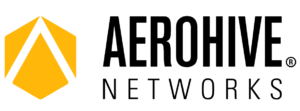Top 5 Challenges of Monitoring Multi-cloud Environments
Today’s enterprises use many different clouds, which makes monitoring and management more difficult than ever.
A Quick Guide To Configuring An Aerohive AP
 Whether through a purchase or demo gear, you have your hands on an Aerohive AP. If you have never dealt with Aerohive before from a wireless perspective, you might be asking yourself how to configure the AP. This post is meant to serve as a starting point to take that AP and put some configuration on it so that you can start connecting clients.
Whether through a purchase or demo gear, you have your hands on an Aerohive AP. If you have never dealt with Aerohive before from a wireless perspective, you might be asking yourself how to configure the AP. This post is meant to serve as a starting point to take that AP and put some configuration on it so that you can start connecting clients.
This post is not meant to be an exhaustive reference, as there are MANY things that can be configured. Rather, it is meant to be a starting point in which the reader is introduced to the overall configuration mechanisms within HiveManager at a high level. At the time of publishing(December 2018), these are the steps needed to put in AP into operation. However, the nature of the rapid pace at which HiveManager is updated means that things could change that alter the configuration flow. It is also worth noting that this post utilizes the public cloud/Internet option for HiveManager. Although there are 3 different deployment options for HiveManager(public cloud, private cloud, single VM), this post utilizes the public cloud option. Configuration between the 3 different models is relatively the same.
Before You Plug That AP Continue reading
Bifurcation of Knowledge
My friend Andrea Dainese (of the Route Reflector Labs fame) sent me this observation:
Because of lack of fundamental skills, I see two groups forming: junior guys with low salary (the bigger group), and a few experts (hopefully with higher salary). The middle group is disappearing. Intermediate-level engineers are either moving to the entry level (because the complexity is increasing and they are not keeping up with it) or to the upper level.
I call this phenomenon bifurcation of knowledge (I’m positive it has a formal name – would appreciate a comment with a set of pointers), and it’s a direct result of commoditization and the changing shape of the learning curve.
Read more ...SDxCentral’s Top 10 Articles — November 2018
 Cisco slashes jobs in new round of layoffs; what top Cisco executives make; and Germany joins in on Huawei bans.
Cisco slashes jobs in new round of layoffs; what top Cisco executives make; and Germany joins in on Huawei bans.
Related Stories
Tech Bytes: How VIAVI Measures End User Experience To Improve Performance Management (Sponsored)
In this Tech Bytes episode we talk with sponsor VIAVI about performance management and the essential role that end user experience metrics play in turning piles of data into actionable insights.
The post Tech Bytes: How VIAVI Measures End User Experience To Improve Performance Management (Sponsored) appeared first on Packet Pushers.
Botswana Chapter Digital Literacy Program Seeks to Empower Rural Village Development Committee Leaders

The newly charted ISOC Botswana Chapter is set to spread the Internet Society mandate in Botswana through engagement with relevant stakeholders. The diverse team of technical, communications, and policy practitioners will venture into impact initiatives to complement the Internet Society mission and mandate. As a Beyond the Net 2018 beneficiary, the local chapter is embarking on a project titled: “Internet for Development of Rural Botswana: Empowering Village Development Committees Through Use of the Internet.”
The Village Development Committees (VDCs) are the custodians of community development initiatives. VDCs operate on values of engagement, consultation, and participation and this project hopes to contribute in enhancing these values using the Internet. The digital literacy trainings program is designed to target VDCs leaders in 4 remote regions with the aim of empowering these village leaders with digital tools and resources. VDC Tech Champions will be identified and will be responsible for continued facilitation of the digital literacy training program. To facilitate future support, ISOC Botswana will donate laptops and wireless Internet modems to ensure resources and access.
Beyond the trainings, this project will collect impact stories of the anticipated improvements in VDCs’ operations, relating to digital access and engagement. The hope Continue reading
CenturyLink Dove Into NFV Early Because of a Profitable Business Case
 Bill Walker, director of network architecture and innovation with CenturyLink, said there are three business cases for NFV. The worst business case is for new technology that is not directly revenue generating.
Bill Walker, director of network architecture and innovation with CenturyLink, said there are three business cases for NFV. The worst business case is for new technology that is not directly revenue generating.
Nutanix and Intel Form Hyperconverged Infrastructure Partnership
 As part of this partnership, systems integrators and value-added resellers will be able to brand and personalize Intel servers running Nutanix software.
As part of this partnership, systems integrators and value-added resellers will be able to brand and personalize Intel servers running Nutanix software.
Pluribus Broadens Support for Edgecore White Box Switches
 The partners expanded their support for Pluribus’ network operating system and cloud fabric software on five additional Edgecore white box, top-of-rack switches.
The partners expanded their support for Pluribus’ network operating system and cloud fabric software on five additional Edgecore white box, top-of-rack switches.
Introducing the Virtual Cloud Network Readiness Assessment
Is your network ready for applications, automation, multi-cloud, containers and more? Here’s a truth bomb for you: the network that got us here today is not sufficient for tomorrow. Sorry to be sardonic, but here are the facts: today, new business models, cloud adoption, and the explosion of connected devices are now must-haves for organizations that are prioritizing digital transformation initiatives. But legacy network approaches rooted in hardware just don’t cut it anymore; technology is rapidly shifting and improving at a rate that is undeniably fast. To keep up, modern networks must be able to support operations across data centers, multiple clouds, branch locations, and edge devices while prioritizing security for the ever-growing amount of application data that flows from every point within a network.
Despite these shifts and needs, many organizations do not have a unified approach to management, automation, and security. Do you know if your network does? Find out how software-first networking can transform your business.
Virtual Cloud Network Readiness Assessment
The Virtual Cloud Network Readiness Assessment can help you assess the current state of your network and security – for free. By answering a few questions in this 10-minute survey, you’ll get a personalized report that Continue reading
Symantec Shakeup Continues With President, Other Senior Execs Leaving
 The executive team shakeup caps a tumultuous year for the company that recently concluded an internal investigation into financial disclosures and announced plans to cut about 8 percent of its global workforce.
The executive team shakeup caps a tumultuous year for the company that recently concluded an internal investigation into financial disclosures and announced plans to cut about 8 percent of its global workforce.
Nokia Bolsters 5G R&D Coffers With $283 Million Loan
 The new deal comes hot on the heels of a $567 million loan from the European Investment Bank (EIB), bringing the total amount of publicly announced 5G financing to $851 million.
The new deal comes hot on the heels of a $567 million loan from the European Investment Bank (EIB), bringing the total amount of publicly announced 5G financing to $851 million.
Nominations Now Open for 2019 Public Interest Registry (PIR) Board of Directors
The Public Interest Registry (PIR) is the non-profit operator of the .ORG, .NGO and .ONG domains. If you or someone you know has the interest and qualifications to help guide the future of PIR, the Internet Society invites you to consider a seat on the PIR Board of Directors.
In 2019 there are three positions opening on the PIR Board. These three directors will serve a 3-year term that begins mid-year 2019 and expires mid-year 2022. Prior board experience is preferred. All directors must be able to read and understand a balance sheet, as well as read and communicate effectively in the English language.
More information about the position, the qualifications, and a link to the nomination form can be found at:
https://www.internetsociety.org/pir/call-for-nominations/
The deadline for nominations is 15:00 UTC on February 4, 2019.
The post Nominations Now Open for 2019 Public Interest Registry (PIR) Board of Directors appeared first on Internet Society.
The Week in Internet News: Huge Data Breach at Hotel Chain

Millions of records stolen: Marriott International, one of the world’s largest hotel chains, has reported a data breach affecting up to 500 million customers, the Washington Post reports. The breached database includes information on guests staying at Sheraton, Westin and St. Regis hotels. The 500 million records lost makes it the second largest data breach reported.
Encryption debate back yet again: U.S. deputy attorney general Rod Rosenstein, best known for overseeing the investigation into President Donald Trump’s ties to Russia, has renewed the Department of Justice’s long-term call for encryption workarounds in tech products, Wired.com reports. Addressing critics of encryption backdoors, Rosenstein said: “Just because people are quick to criticize you does not mean that you are doing the wrong thing. Take it from me.”
Countering view: Meanwhile, Robert Anderson, a former top cyber official at the FBI, said that since leaving the agency and working on cybersecurity issues, he now understands why tech companies would oppose government efforts to break encryption. Companies “entrusted by the clients who have given them information” have a responsibility to protect it, he said in an FCW.com story.
Someone’s watching you: Chinese Internet companies have begun to keep detailed records Continue reading
6 Design Principles of the Modern LAN
Modern LAN design can address a wide range of challenges that network architects and administrators are encountering today